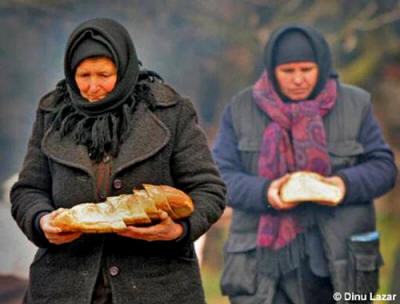|
from IMVA Website
During 2010, agricultural commodity prices have exploded. Nearly every single important agricultural commodity is experiencing double-digit percentage price increases.
The S&P GSCI Agriculture Index recently surged to a fresh two-year high and now we find that food producers and retailers are starting to pass those commodity price increases on to consumers. Food inflation is real; it is here and it’s going to hurt a lot of people.
In fact, food inflation is hitting consumers hard all over the globe this fall. According to the United Nations, international wheat prices have soared 60 to 80 percent since July. Since the beginning of 2010, the price of bread has gone up 17 percent and the price of meat has gone up 15 percent in European Union countries.
The inflation rate in Russia
rose to 7 percent
in September primarily because of rising food costs.
Corn prices surged again last week after a new report from the United States Agriculture Department said this year’s corn crop would be smaller than expected.
The harvest is forecast to be 3 percent lower than the 2009 crop. In Canada prairie farmers have faced near impossible planting conditions this year. In Saskatoon, for example, 290 mm of rain fell throughout the summer. The average rainfall amount is 184 mm. Both Regina and Winnipeg also saw above average rainfall amounts, which left fields too saturated to get into.
If the wet and soggy conditions weren’t already bad enough, an early
frost gave farmers yet another barrier to contend with. The cooler
temperatures not only lead to a loss in crop yield, it also limits the time
spent in the field for production.
In Korea, over the past 12 months, the price of cabbage - the main ingredient in kimchi, the country’s national dish - has risen over 400% to 11,500 won ($10) from 4,000 won two weeks ago and 2,500 won a month ago.
In a recent article entitled “An Inflationary Cocktail In The Making,” Richard Benson listed many of the other agricultural commodities that have spiked in price in 2010…
...and the list goes on and on with the
worst yet to come.
There are 60 million on Social Security and they are not getting any cost of living allowance (COLA) increases to compensate for inflation in 2010, nor will they get any in 2011. Those living on fixed incomes or government assistance are being ravaged by exploding inflation. A global food crisis is brewing and with it massive inflation is arriving at a time when we have the most people on government assistance since the Great Depression.
The price of food is going to continue to go up and the value of
our paper currencies will continue to go down as the race to the bottom
continues.
Prices of food
are beginning to soar again just as millions are losing the ability to
afford a reasonable diet, though little of this is being observed or
reported. But soon even the blind will see.
For the most part, we’re not aware of the problem, but if we look
hard at the “hidden” news we see that the handwriting is on the wall for an
unimaginable crisis that will come on us as early as next year.
|


